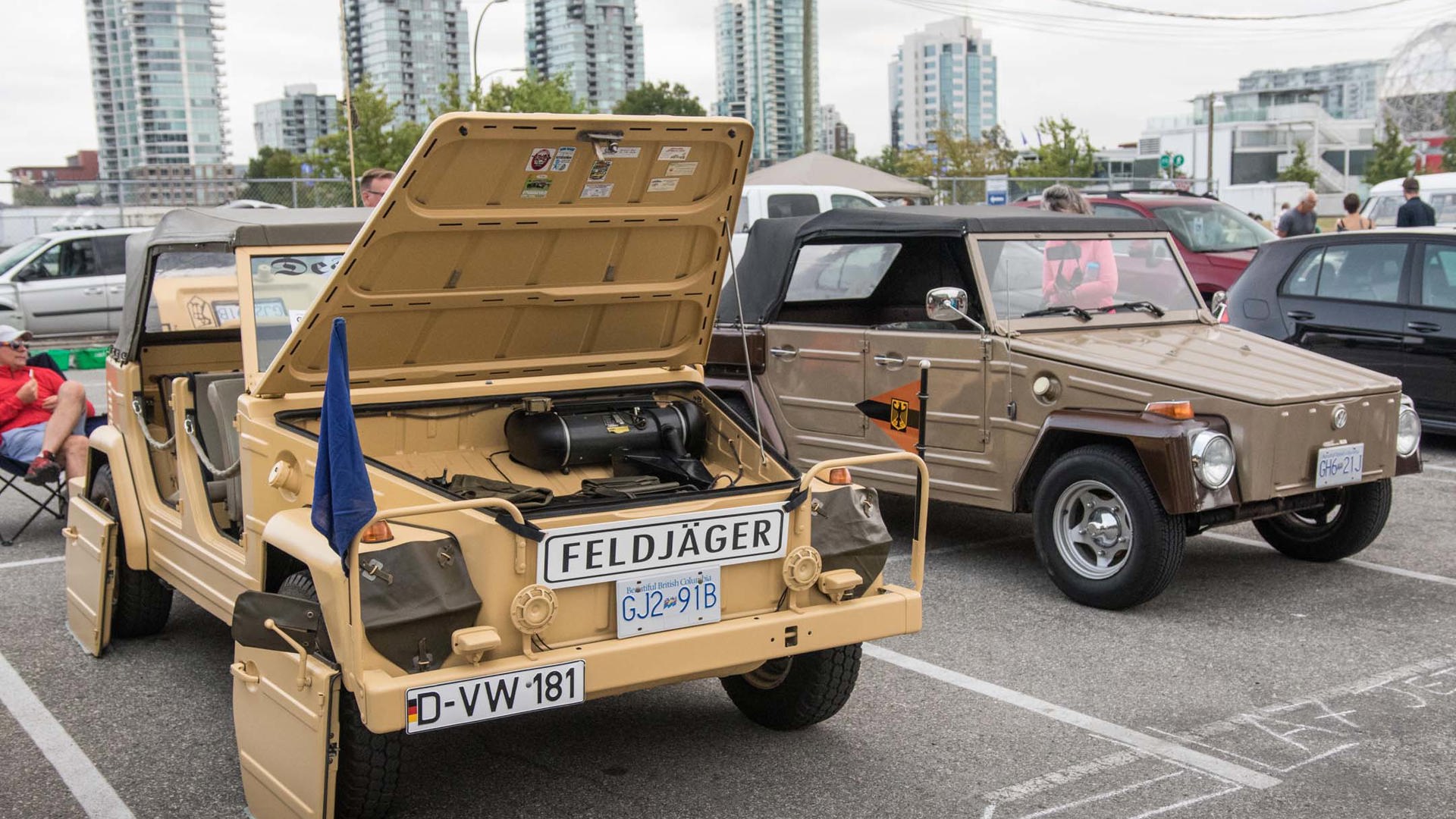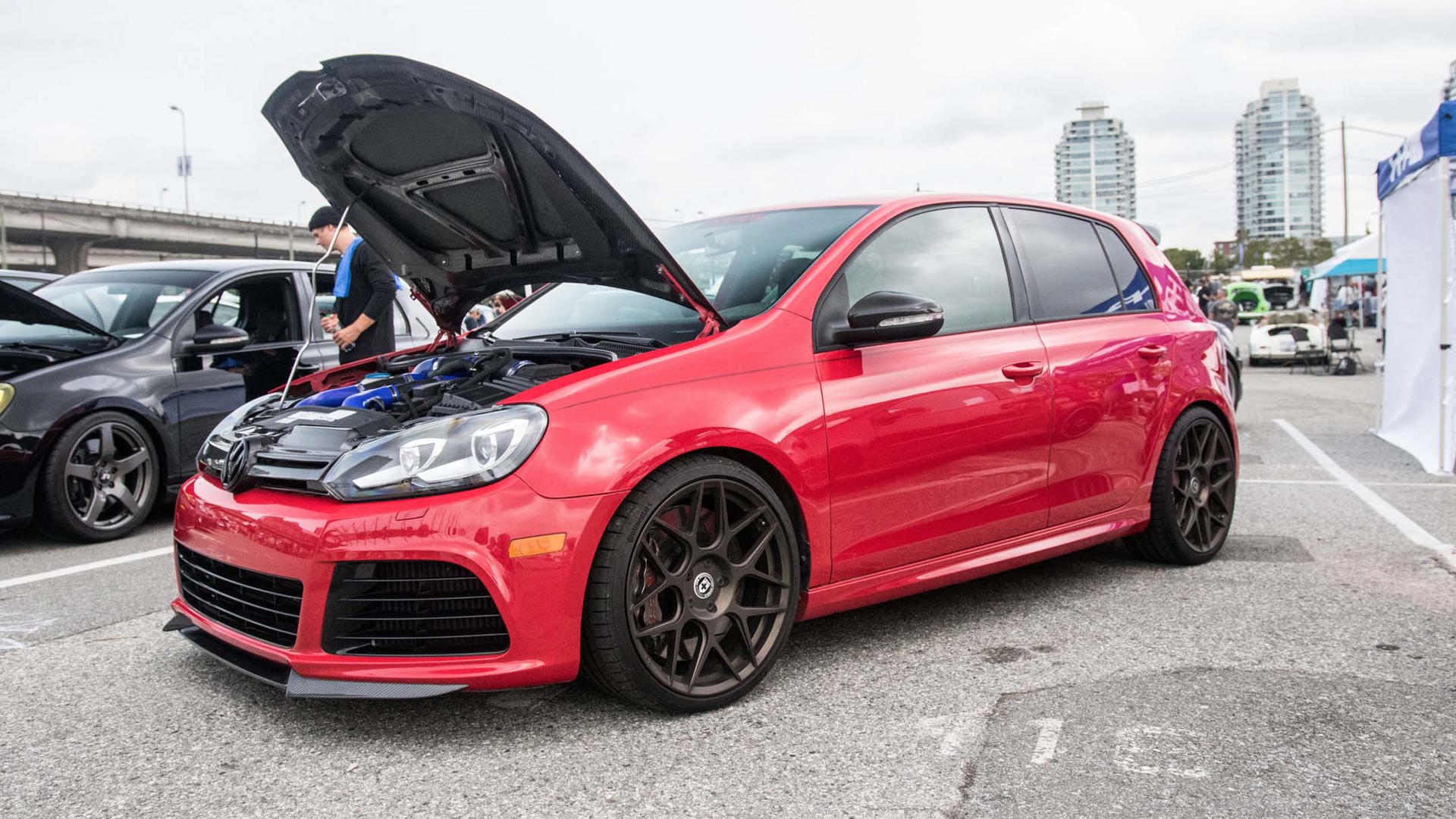For almost thirty years, the Great Canadian Volkswagen Weekend has celebrated all things Vee-Dub on the west coast of Canada. There are races at the dragstrip on Friday night, a pancake breakfast and a poker run on the Saturday, and then a cruise over to a Hawaiian-themed party that runs late into the night.

Capping everything off is a massive show held on the Sunday, filling the huge parking lot that sits in the shadow of the Georgia Viaduct. It doesn’t matter whether you’re into air-cooled, water-cooled, slammed show rods, or vintage campers – there’s something for every VW fan here.

“M’lady.” *tips canopy*
Sitting next to the gates, this Sterling kit-car doffed its cap by way of greeting arrivals to the show. Fitting fibreglass bodies to Volkswagen chasses is a time-honoured tradition, and Sterling offered one of the wackier-looking styles.

Here’s the heartbeat of VW enthusiasm, the simple flat-four engine that started it all. Simple to work on with even basic hand tools, VW’s air-cooled small-displacement pancake can be built for big power or repaired on the side of the road with a shoe-string budget.

At the other end of the spectrum are the complex water-cooled cars, chipped, boosted, and slammed on air suspension. This Jetta GLI’s colour-shifting paint made it a standout, with aggressively offset wheels and a clearly visible intercooler.

Things get even crazier with this 1990s Golf, which boasted Le Mans–style turbofan wheels and hulking overarches to go with a cleanly executed VR6 swap. Stickers under the hood are the sleeve tattoo of the VW world.

The tuned-up water-cooled machines weren’t the only VWs built for hot-dogging. This converted camper was doing a brisk trade in the tube steak department. Too bad they weren’t official VW Currywurst, as served at Volkswagen’s factory cafe.

With huge aftermarket support, it’s possible to buy almost anything for your Volkswagen project. However, finding the really rare parts is all about hitting the swap meets and scouring the piles for discontinued items. This couple unloaded a pile of treasures from their Type II pickup.

Kiln-fired and air-cooled. As you’d expect, there were any amount of kitschy VW souvenirs to be had today.

This little Bug needs no introduction. It’s Herbie! Or at least a faithful tribute to him. The ubiquity of the VW Beetle made it a cultural icon, and films like 1968’s The Love Bug are still classics.

This owner is probably bone-tired of waiting for the new all-electric VW ID Buzz van to go on sale. Hang in there, bud, as VW’s anxious to tuck the TDI scandal back in the closet and get back to pleasing its fans.

Thing 1 and Thing 2. The Type 181 was developed in the late 1960s, and used mostly Beetle running gear. It fits between the WWII Kubelwagen, and the later Iltis developed by Audi and used by Canadian forces.

From faded and slightly ragged like a favourite pair of jeans, to crisp and khaki-coloured like brand-new chinos, Beetles were abundant today in every possible colour combination and condition.

Intermeccanica is a Vancouver-based niche manufacturer that’s been building replica Porsche 356s for years. They’ve started making forays into the electric market, with a single-person commuter called the Solo, and electric-drive 356s. Most of the fun of driving a classic car, and plug-in EV reliability.

This is a Hell-Golf, a tuned Golf R that boasts some 740 hp from a twin-turbocharged VR6 swap. It’s got all-wheel drive to get the power down, and a strengthened seven-speed DSG transmission sourced from Audi. It’s the ultimate in Golf power, and it’s built in Langley, by HPA, using mostly Canadian labour.

This hilariously named little, uh, camper is like a Mini-Winnebago. Creative people have always been drawn to VWs, and the car’s simplicity means that imagination is the only real limitation, man.

Super-vintage styling, but a build fresh enough to be parked in the foyer of an outdoor store. VW campers are all the rage with authenticity-seekers, and this late-1970s bay-window Westfalia drew a crowd with its wonderful plaid interior.
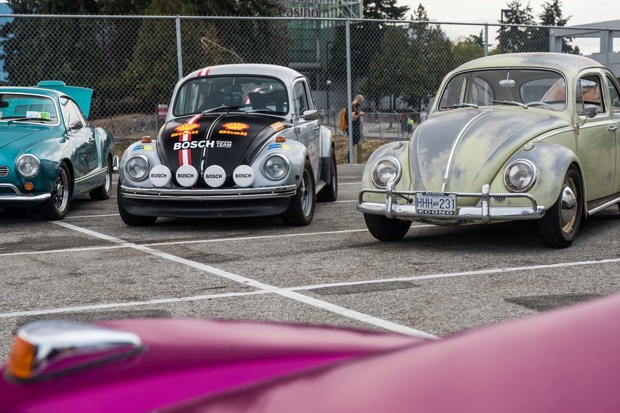
Super Beetles are perhaps less sought-after than the earlier VW Beetles, but some of the fan builds are incredible. The rally-style car with the black hood is a tribute to an Austrian factory racing team, and features aircraft headsets (required, because the car’s so loud), a built 2.1L motor, and a three-foot-long handbrake. Super Beetle indeed.

At a VW show, patina isn’t something you patch or polish, it’s a badge of pride. For every flawlessly restored car in attendance, there are sun-blistered Bugs that attract just as many admiring glances.

Tucked in the front trunk of a 1954 Beetle with just 40,000 original kilometres on the clock, this lovely little travel kit includes a faded original Beetle handbook, a tidy leather suitcase, and a wooden dipstick for checking the fuel levels.

Never available in Canada, you’d think the feisty little Lupo GTI would be a good fit for high fuel prices. With a fizzy 1.6L engine and not much curb weight to chuck around, it’s perhaps more faithful to the original GTI formula than the current Golf. This one’s been imported from Japan.

This quick red Fox wagon might be able to chase down a rabbit or two. You’re not likely to see a Fox on the road these days, as most of them were used heavily and then disposed of when the repair bill got too big. This one’s been carefully preserved by a fan of the breed.

The HPA-tuned Golf made power through technology. This outlaw drag car makes it the old-fashioned way: big boost through a carburettor and a turbocharger the size of a spaniel.

The Corrado was a far more expensive car than the Scirocco it replaced, and you don’t see many around. However, it’s likely the most-collectible VW of the 1990s, and has aged gracefully. The VR6 is the one to have if you can find it.
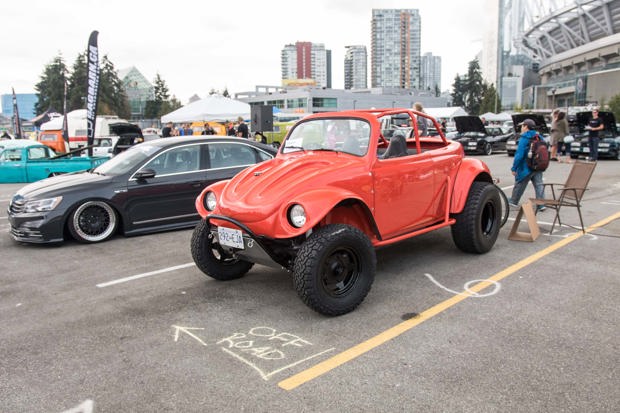
Raise it up in the air, or slam it down into the weeds. VW fans sure don’t seem to favour the middle ground when it comes to suspension choice.
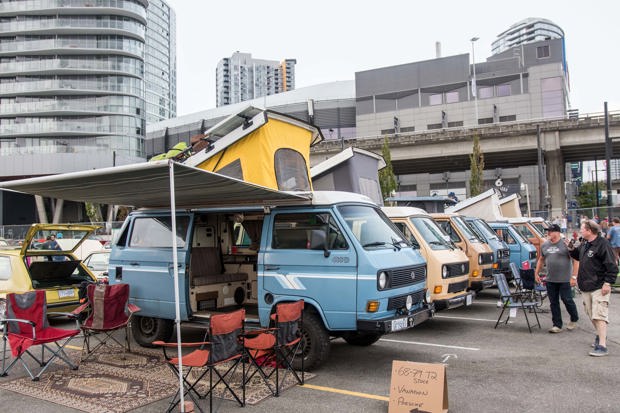
The Westfalia is filled with fond memories for many a child of the 1980s and 1990s. Who didn’t have an aunt, neighbour, or family friend who had one of these pop-top road-slugs? There’s no better way to see Canada than by traipsing around it at a very relaxed pace, stopping wherever it suits you.

Follow that white Rabbit! Off it goes, back down the rabbit-hole to be tucked away until next year’s event. See you then!










